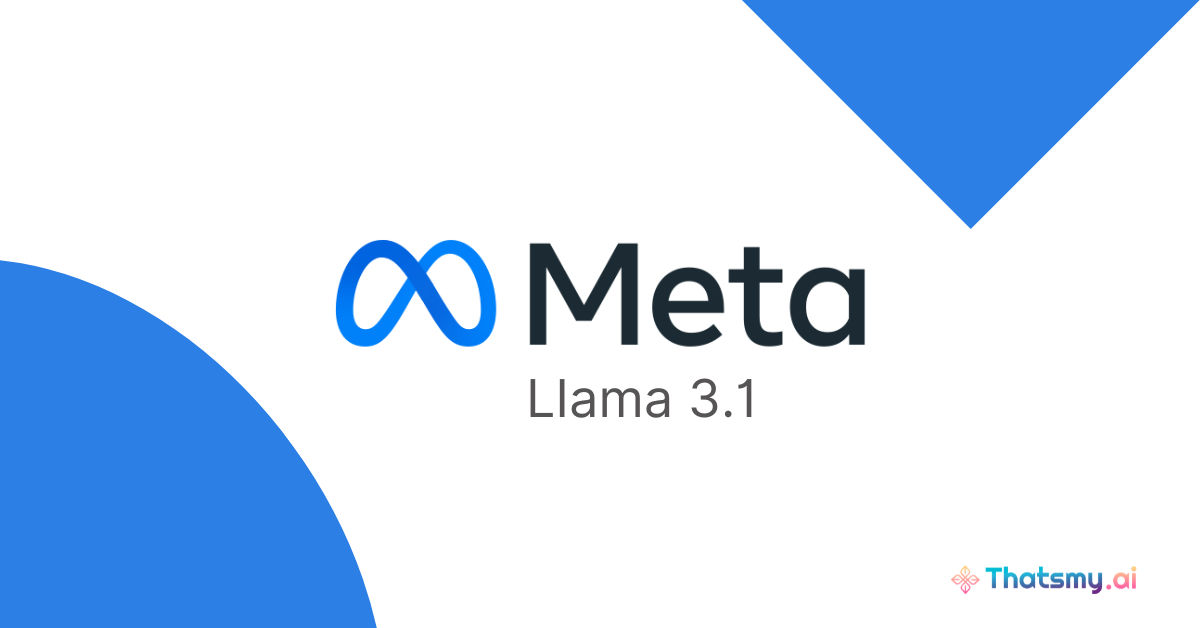Meta has released Llama 3.1, an advanced open-source AI model with versions featuring 405 billion, 70 billion, and 8 billion parameters. It outperforms leading models like GPT-4 in benchmarks and user evaluations. Llama 3.1 is cost-efficient and accessible, allowing developers and researchers to innovate without the limitations of proprietary systems. However, its large size raises concerns about resource and energy consumption. Available for free download, it supports a wide range of applications.

Meta has once again pushed the boundaries of artificial intelligence with the release of Llama 3.1, its most advanced open-source AI model to date.
This release marks a significant milestone in the AI landscape, promising enhanced performance, greater accessibility, and a commitment to open-source principles.
Let's dive into the details of this groundbreaking model and understand what sets it apart.
Llama 3.1 is Meta's latest AI model, available in three versions with different parameter sizes:
405 billion
70 billion
8 billion
Each version comes with a 128,000 context window, allowing the model to process extensive information simultaneously.
This context window is crucial for tasks requiring an understanding of large texts or complex queries, making Llama 3.1 a powerful tool for various applications.
One of the standout features of Llama 3.1 is its superior performance. In multiple benchmark tests, the 405B model has scored higher than leading models like GPT-4 and Claude 3.5 Sonnet.
Human evaluators also rated Llama 3.1's outputs as comparable to or better than those from these models.
This demonstrates its capability to generate high-quality, coherent, and contextually accurate responses.
Key performance highlights include:
Higher benchmark scores: Llama 3.1 consistently outperformed GPT-4 in various tests.
Positive human evaluations: Users found its responses to be on par with or better than other top models.
For example, in specific tasks such as language translation, text generation, and complex question-answering, Llama 3.1 has shown remarkable proficiency.
It has proven to be more effective in understanding and generating nuanced responses, making it an invaluable tool for developers and researchers.
Llama 3.1 not only excels in performance but also offers cost advantages. Running inferences on the 405B model is approximately half the cost compared to closed-source models like GPT-4.
This cost efficiency is significant for businesses and researchers who need to run large-scale AI applications without incurring prohibitive expenses.
Meta has a strong commitment to open-source principles, and Llama 3.1 is a testament to this philosophy.
CEO Mark Zuckerberg has emphasized the importance of open-source innovation in driving technological progress.
By making Llama 3.1 available for free download on platforms like Meta's official website and Hugging Face, Meta ensures that a wide range of developers and researchers can access and utilize this advanced model.
The model is released under the LLAMA 3.1 COMMUNITY LICENSE AGREEMENT, which allows redistribution and commercial use under certain conditions.
This move democratizes access to cutting-edge AI technology, enabling more individuals and organizations to contribute to and benefit from AI advancements.
Llama 3.1 is designed to be versatile and can be used in various applications. For instance, it can be employed in natural language processing tasks such as:
Language translation
Sentiment analysis
Conversational AI
Its ability to handle extensive context makes it suitable for:
Research purposes
Content creation
Interactive AI applications like chatbots
Meta has also provided a demo of a chat AI using the 405B model on NVIDIA's AI platform. Users can experience the capabilities of Llama 3.1 firsthand, testing its performance in real-time scenarios.
This accessibility allows developers to explore its potential and integrate it into their projects with ease.
While Llama 3.1's large size and high performance are impressive, they also raise concerns about computational and energy resources.
Large AI models require significant computational power, which can have environmental impacts. Meta and other industry leaders are aware of these challenges and are working towards more efficient model designs to mitigate potential negative effects.
The release of Llama 3.1 is a significant step forward, but it's also a part of Meta's broader vision for AI. The company aims to continue advancing AI technology while maintaining a commitment to openness and accessibility. By fostering a collaborative environment, Meta hopes to drive further innovations and optimize AI for various uses.
Sign up to gain AI-driven insights and tools that set you apart from the crowd. Become the leader you’re meant to be.
Start My AI Journey
ThatsMyAI
20 March 2025

ThatsMyAI
7 March 2025